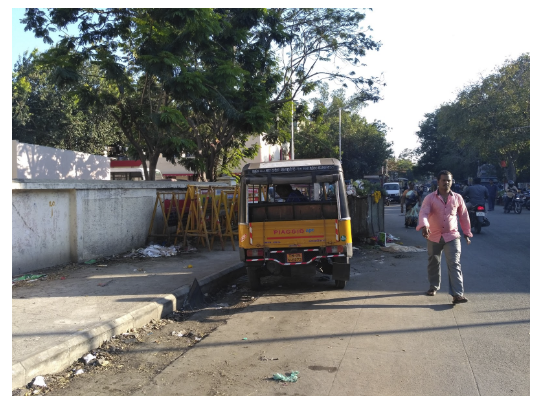making chennai walkable: dream or reality?

Ever since Jane Jacobs’ classic The Death and Life of Great American Cities, urbanists have extolled the ideal of the dense, mixed-use, walkable neighbourhood, contrasting it with the dull and deadly cul-de-sacs of car-oriented suburbs. The importance and health benefits of walking to an individual and the society as a whole are multiple folds. From being healthy to tackling climate change, walking has become the new ideal way of living and experiencing cities.
Walkability is the commuting ideology that has shaped the urban history of India. Bicycles, bikes, cars, buses and mass transit were developments of a later stage. There is a rapidly increasing demand for walkable places and to an indictment of our car-oriented cities, which “have effectively become no-walking zones”.
Online tools like the ‘Walk Score‘ is a testimony to the fact that many cities and neighbourhood in India are planned to be pedestrian-friendly and walkable. However, live encounters say otherwise. What could be the reason for the failure of even planned neighbourhoods in terms of walkability?
I would like to throw light on the measure of the non-pedestrian friendly quality of cities in India as an urban challenge with the case study of my hometown, Chennai.

Rampant illegal parking on foothpath. 
Illegal parking on footpath 
Unaccessible foothpaths 
Barricades blocking the footpath
Different case for Footpaths as observed in Chennai
- Case 1: Wide pedestrian-friendly footpath is present. – Low intensity
- Case 2: Footpath is present but is encroached by shop-keepers and house owners. – High intensity
- Case 3: Footpath is too narrow to walk. – Medium intensity
- Case 4: Footpath is used as a parking lot for two-wheelers and four-wheelers. – High intensity
- Case 5: Footpath is blocked by electrical transformers/dustbins/trees/construction debris. – Medium intensity
- Case 6: Footpath is encroached by street hawkers and vendors. – High intensity
- Case 7: No footpath at all. – High intensity
Chennai is the sixth most populous city in India. Known for its history, heritage, chronicles of the past and the most famous, Marina Beach, it does little to heed to the needs of the Chennaites. By that, I specifically mean Pedestrians. Two-thirds of Chennai’s population belong to Middle-income and Low-income group.
The travel of a person from home to office and vice-versa relies on walking on roads, as one can imagine. But the reality shows a stark lack of pedestrian-friendly roads and transportation means within Chennai. (see the gallery images)
Like any other growing city, Chennai also gives importance to the four-wheelers, which is one-third of its population. Do I mean that there is not a single footpath in Chennai? NO.
Anyone who has been to Chennai can easily understand that it is not just the lack of proper footpaths but also the inappropriate usage of the existing ones. A very fine footpath is present on the promenade of Marina Beach. However, examples like these are rare.
The plight of the pedestrians is at stake. This puts them in unguarded danger since the situation of road safety is bleak. This recklessness has cost several lives. A minimum of 20 pedestrians meets with an accident every day, ranging from minor injuries to fatal deaths. Sadly, Tamil Nadu also tops list of states with most pedestrian deaths in the country.
Strategies to Make Cities Walkable
The need of the hour in Chennai is to provide safe infrastructure for pedestrians. Because, no matter how much we prioritize vehicles over pedestrians, people would not and should not stop walking.

Walkability is no longer just an idea. The evidence from a growing body of research shows that walkable neighbourhoods not only raise housing prices but reduce crime, improve health, spur creativity, and encourage more civic engagement in our communities.

I envision a scenario where people can commute to places by walking or cycling in safe and comfortable surroundings. Furthermore, I have a humble set of ideas to strategize pedestrianisation and livability.

- Creating a good network of pedestrian infrastructure starting with footpaths and educating people of its usage through public participation campaigns
- Enforcing laws that take actions on people misusing the infrastructure.
- Providing hawker modules and demarcating their zones because they are a part of our economy as well.
- Designing well-connected cycle tracks, especially in school and office zones.
- Activating public spots to encourage social interactions and cohesion.
- Utilizing the dead corridors or urban voids and transforming them into walking and cycling zones.

The strategies are simple and straightforward. It is not one of these strategies but a combination of it will bring about a positive impact on the livability aspect of the Indian cities. The challenge lies in creating awareness about the proper utilisation of the infrastructure the cities have already laid out for its people. Also, engaging citizens in the city’s decision-making process.
These fundamental steps will truly make the cities participatory, smart, responsive and livable. Let’s hope for walkable Chennai again.
